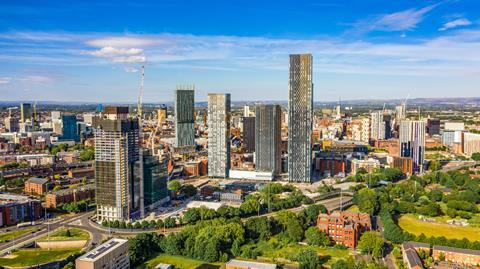Inspectors approve 700-page Places for Everyone plan subject to consultation on final modifications
Planning inspectors have approved the latest version of the long-awaited 175,000-home joint Greater Manchester plan for its final consultation before adoption.

The inspectors have given the green light to a set of final modifications to the controversial joint plan, now a decade in the making, which the Greater Manchester Combined Authority is set to consult on shortly ahead of adopting the plan next year.
The modifications include a modest increase in the amount of green belt to be reclassified under the plan for housing development, though the proposed green belt take is still well below the original proposals from 2016.
The joint plan sets out a vision for building 10,305 homes a year in nine Greater Manchester authorities up to 2039, and when adopted will be the only functioning strategic plan in England outside of London.
The tenth greater Manchester council, Stockport, withdrew from the joint plan in 2020 following controversy over the authority’s green belt allocation.
The latest Places for Everyone plan, which has now been examined and found sound subject to these final modifications, proposes releasing 2,213ha of land from the green belt in Greater Manchester, which is 4.1% of the total. While this is more than the combined authority had proposed when it took the plan to examination, it is vastly less than the 8.1% reduction in the green belt in the joint plan’s original incarnation.
The green belt release will see the proportion of Greater Manchester covered by green belt reduce from 46.7% to just under 45%.
This is despite the plan taking a “brownfield preference” approach, where high density development on brownfield sites is encouraged. However, the need to demonstrate deliverability and viability of sites means that use of greenfield and some green belt sites remained unavoidable, the draft plan states.
The authorities of Manchester and Salford will take the largest shares of the housing proposed, with the two authorities taking allocations of 64,373 and 35,304 homes respectively over the plan period. Trafford will take the third biggest allocation, with 23,246 homes required.
If the plan is adopted as proposed next year, councils in Greater Manchester will be required to draw up local plans in accordance with the overall strategy. The plans sets density targets for different types of development as well as space and accessibility standards.
Plan inspectors William Fieldhouse, Louise Gibbons and Steven Lee said in a letter to the joint plan team at the Greater Manchester Combined Authority (GMCA) on Friday that “We are satisfied at this stage of the examination that all of the proposed main modifications in PMM6/GMCA12.3.3 [the plan] are necessary to make the Plan sound and/or legally compliant, and would be effective in that regard”.
Politicians in Greater Manchester have been working on a joint plan for the area since 2014, with combined authority mayor Andy Burnham commissioning a major re-write of the proposals upon coming to office in 2017.
>>See also: Andy Burnham interview: remaking Manchester
>>See also: Your guide to the key players shaping construction in Manchester
Paul Dennett, mayor of Salford City Council and the GMCA lead for the plan said he was pleased by the inspectors’ conclusion.
“It has been a long road to get us here, but the prize at the end of more homes, more jobs and sustainable growth rejuvenating our green spaces, reshaping our town centres and integrating new developments with our transport infrastructure to unlock new opportunities and tackle inequalities looks ever closer.”
He said he hoped adopting the plan would help councils in the area avoid “planning by appeal while giving “every resident and family in Greater Manchester […] a place to call home”.
He said: “We now move into the next phase of council approvals and a public consultation on the plan, and I hope that by next year we can move towards adoption of the plan and turn our vision into a reality.”

























No comments yet